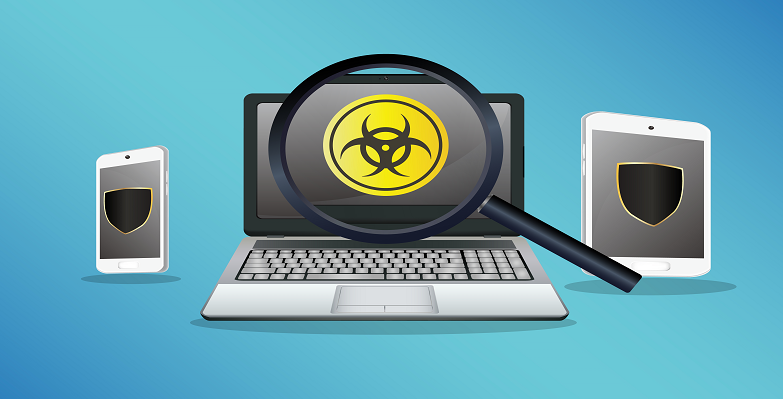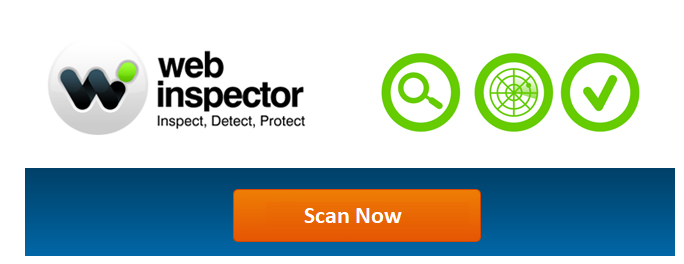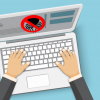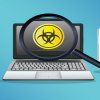A malware scan is a process of running a cybersecurity tool to check your device’s security status. Computer enemies are known as malware. Therefore website virus checker tries to establish whether the system might be infected by malware. Both mobile devices and Pcs are targets of cybercriminals every day. With various website scanners tools, you can keep your devices free from malicious software.
What Is A Malware Scan?
Website scanning is a complex process involving various tools and techniques. The following are the universal steps and sub-processes;
Types of Malware Scan
Signature-based detection
Whenever a new file is introduced in a computer system, the scanning process commences immediately. The malware scan program analyzes the file to pick its unique identifying code. It is worth noting that every malware has a unique signature that is different from others. The anti-malware has a database containing almost all known malware signatures. After picking the new file code/signature/identifier, it sends it to the database for comparison.
If the code matches any in the anti-malware database, the new file is considered malicious. Immediately, it is deleted from the computer to avoid spreading.
Heuristics
Viruses and other forms of malware come up every day; anti-malware uses heuristic functions to detect new threats. Therefore, behavioural patterns can determine the nature of a file, whether a threat or not.
A file that displays more harmful traits than good is considered malware.
Sandbox
If a file displays malicious behaviours, it is quarantined in a sandbox. It is a protected space from which further analysis determines whether the file is malicious. If the file depicts 80% harmful characteristics, it is considered a threat and denied access.
Malware Removal Tools.
It is the final stage of website scanning. After identifying a threat, it is time to eliminate them. Various tools do the removal. They delete every malware trace from the system to ensure that your computer is safe.
Best Malware Removal Tools [Updated 2025]
1. Avast free antivirus
It is one of the most popular internet security applications. The software protects all devices running on major Operating systems such as Microsoft Windows, macOS, iOS and Android.
Avast users enjoy robust security that protects their devices against spams, phishing, firewalls and real-time browser monitoring.
2. Webinspector Anti-malware
Just as Avast, this online anti-malware is available for all devices. It can scan and remove malware automatically. It is available in both paid and free versions. The free version requires the user to start it manually to scan their system. The paid version is more autonomous, scheduling scans and providing real-time protection.
3. AVG Antivirus
It is a product of AVG technologies. The program is available freely for primary use, but if you seek technical assistance, you must pay. AVG antivirus offers some of the best protection features: smart scanning, mobile tracking and email protection.
Different website scanners occur differently. Some will allow you to schedule your scans. Others will wait until a new file arrives in the computer’s hard disk. Also, some work on launch, i.e. every time a system boot. The cat and mouse game between security experts and malware developers has led to many security tools. There are different types of security tools that you can use;
Online malware scan tools – these are security tools available only on the internet. Some of these are freely available and do not require you to pay anything. There are also others that you have to pay to access some features. One advantage of our tool, Webinspector.com, is that we have the updated definitions of the malware. Therefore, when using us, you can be sure you are fully protected.
Standalone malware scan tools – These are malware scan tools that can be carried independently in portable disks. Examples are Kaspersky, Avast, MacAfee and AVG. One of the major drawbacks of these software is that they are not frequently updated. Some allow complete database downloads while others require you to download the entire software.
Emergency Malware Removal
In some very likely instances, your website scanner too may miss out on a very new threat entrant. You may end up stuck when you try running an antivirus while there’s already malware entrenched in your system. In both cases, you may have to rely on emergency malware clean up tools. Examples of such tools are; Webinspector, Sophos, Symantec etc.
You can also contact security vendors to inquire whether they offer free rescue disks. Most of them provide ISO files that you can burn into a CD and boot you to a different operating system. Whenever you boot from the disk, you log into a different OS. Windows-based malware will only affect your files when on the windows operating system. When you log into the Linux operating system in the rescue disk, you can access, scan and disinfect your computer.
Beyond Malware Protection
Apart from Antiviruses, there are other security techniques people can rely on. For example, you can install a firewall to protect you against exterior attacks. A firewall will filter what enters your system and eliminate potentially harmful files.
You can also choose a security suite, instead of having to choose different individual components, which may not even guarantee your safety. A suite will incorporate more than one security component for better results.
Conclusion
Malware scan is a very important process that you should frequently subject your devices to. This ensures your data security and maximum computer functionality. Also, Website malware scanners are available to ensure your site security. They help safeguard the privacy of your site visitors. Therefore, to ensure you keep all cybercriminals away, make sure you carry out deep website scanners frequently.
Related Resources
Website Status
Website Malware Removal
WordPress Malware Removal








